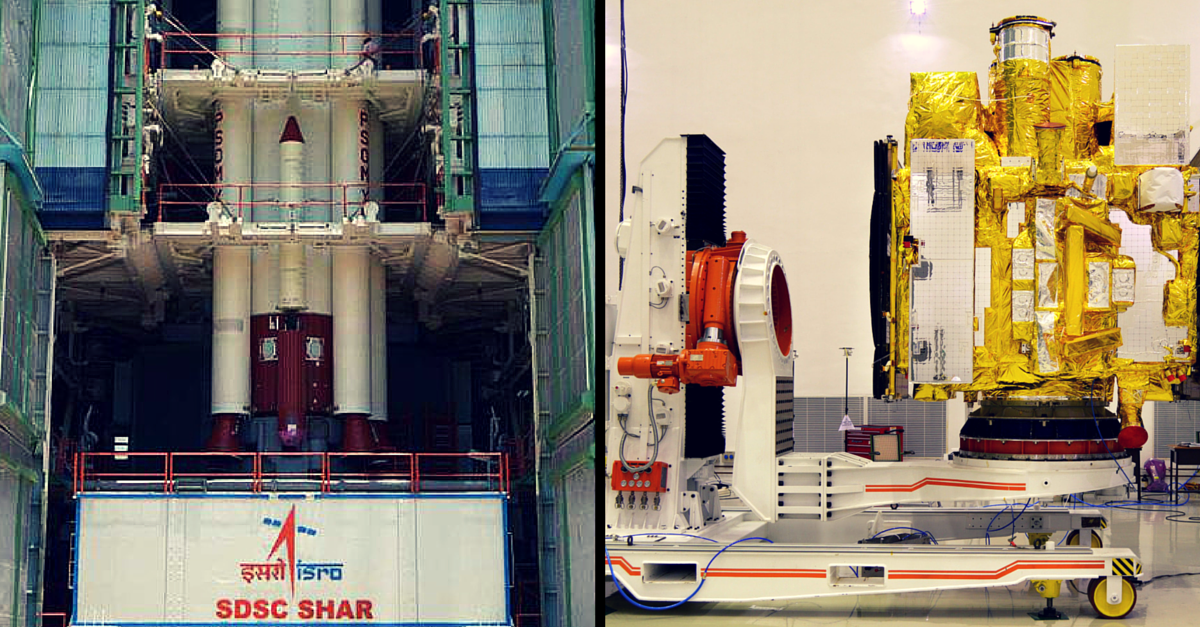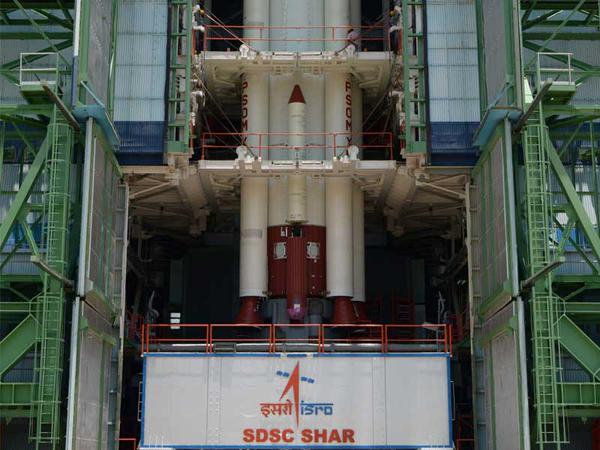ISRO Creates History. Launches India’s First Space Observatory – ASTROSAT
ISRO has successfully launched India's first dedicated multi wavelength space observatory - ASTROSAT, which is meant to observe distant celestial objects and to gain a more detailed understanding of our universe.

ISRO has successfully launched India’s first dedicated multi wavelength space observatory – ASTROSAT, which is meant to observe distant celestial objects and to gain a more detailed understanding of our universe.
Right after celebrating the completion of Mangalyaan’s first year in the Martian orbit, the Indian Space Research Organization has set yet another milestone today. ISRO got its name etched in the scientific history of the India with the launch of the country’s first dedicated multi wavelength space observatory – ASTROSAT.
A 50-hour countdown for the launch of the scientific satellite began at 8 am on Saturday.
PSLV-C30 / ASTROSAT UPDATE: The 50 hr countdown activity of PSLV-C30/ASTROSAT Mission has started at 08:00 hr IST today
— ISRO (@isro) September 26, 2015
And the final launch took place at 10 am today from the Satish Dhawan Space Centre in Sriharikota, Andhra Pradesh.
Source: Twitter
ASTROSAT is an astronomy observatory, a place from where India can study different cosmological phenomena. It is meant to observe distant celestial objects and to gain a more detailed understanding of our universe.
The speciality of ASTROSAT is that with just a single satellite, it enables simultaneous multi-wavelength observations of many astronomical elements.
PSLV-C30 successfully launches ASTROSAT into the orbit pic.twitter.com/tzhDYJOP9j
— ISRO (@isro) September 28, 2015
The 1,513-kg satellite, estimated to have cost around Rs. 180 crore, was launched by PSLV-C30 into a 650 km orbit inclined at an angle of 6 degree to the equator. This is the 31st flight of India’s Polar Satellite Launch Vehicle (PSLV), and six small satellites of three foreign countries have also been launched along with ASTROSAT. It is for the first time that the PSLV launcher, which has lifted 45 small and mid-sized foreign satellites till date, is carrying four US Nano satellites. The other satellites are from Canada and Indonesia.
The spacecraft control centre at Mission Operations Complex (MOX) of ISRO Telemetry, Tracking and Command Network (ISTRAC) at Bangalore will manage the satellite during its mission life.
While most of ISRO’s spacecraft are for specific applications such as communication, Earth observation and navigation, this is one among the few scientific satellites launched by the country. According to the official release by ISRO, missions of ASTROSAT include the following:
- To understand high energy processes in binary star systems containing neutron stars and black holes
- Estimate magnetic fields of neutron stars
- Study star birth regions and high energy processes in star systems lying beyond our galaxy
- Detect new briefly bright X-ray sources in the sky
- Perform a limited deep field survey of the Universe in the Ultraviolet region
ASTROSAT has five payloads which rely on the visible, Ultraviolet and X-rays coming from distant celestial sources.

They will gather data for the better understanding of various astrophysical processes occurring in our universe, and will send it to the ground station at MOX. This data will then be processed and distributed by the Indian Space Science Data Centre (ISSDC). While most scientific satellites can observe a narrow range of wavelength band, ASTROSAT will observe universe in the optical, ultraviolet, low and high energy X-ray regions of the electromagnetic spectrum. All major astronomy institutions and some universities in India will also participate in these observations.
The types and functions of the payloads as described by ISRO are as follows:
The Ultraviolet Imaging Telescope (UVIT, capable of observing the sky in the Visible, Near Ultraviolet and Far Ultraviolet regions of the electromagnetic spectrum
Large Area X-ray Proportional Counter (LAXPC, is designed for study the variations in the emission of X-rays from sources like X-ray binaries, Active Galactic Nuclei and other cosmic sources.
Soft X-ray Telescope (SXT) is designed for studying how the X-ray spectrum of 0.3-8 keV range coming from distant celestial bodies varies with time.
Cadmium Zinc Telluride Imager (CZTI), functioning in the X-ray region, extends the capability of the satellite to sense X-rays of high energy in 10-100 keV range.
Scanning Sky Monitor(SSM),is intended to scan the sky for long term monitoring of bright X-ray sources in binary stars, and for the detection and location of sources that become bright in X-rays for a short duration of time.
CONGRATULATIONS @isro! PSLV-C30 successfully launches #ASTROSAT into the orbit. pic.twitter.com/3PlK5BLZWR
— Doordarshan National (@DDNational) September 28, 2015
Like this story? Or have something to share? Write to us: [email protected], or connect with us on Facebook and Twitter (@thebetterindia).
This story made me
- 97
- 121
- 89
- 167
Tell Us More
We bring stories straight from the heart of India, to inspire millions and create a wave of impact. Our positive movement is growing bigger everyday, and we would love for you to join it.
Please contribute whatever you can, every little penny helps our team in bringing you more stories that support dreams and spread hope.




















